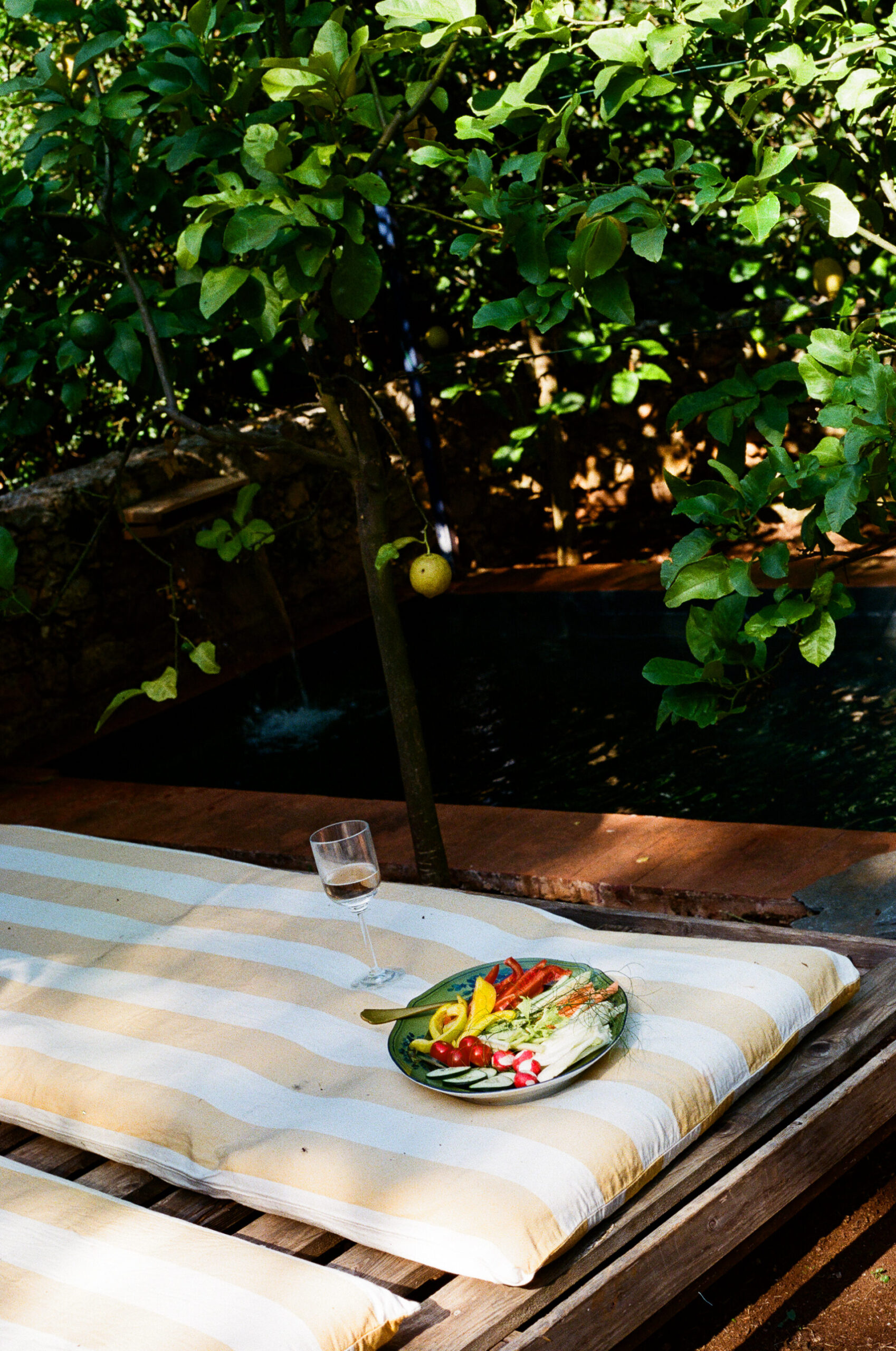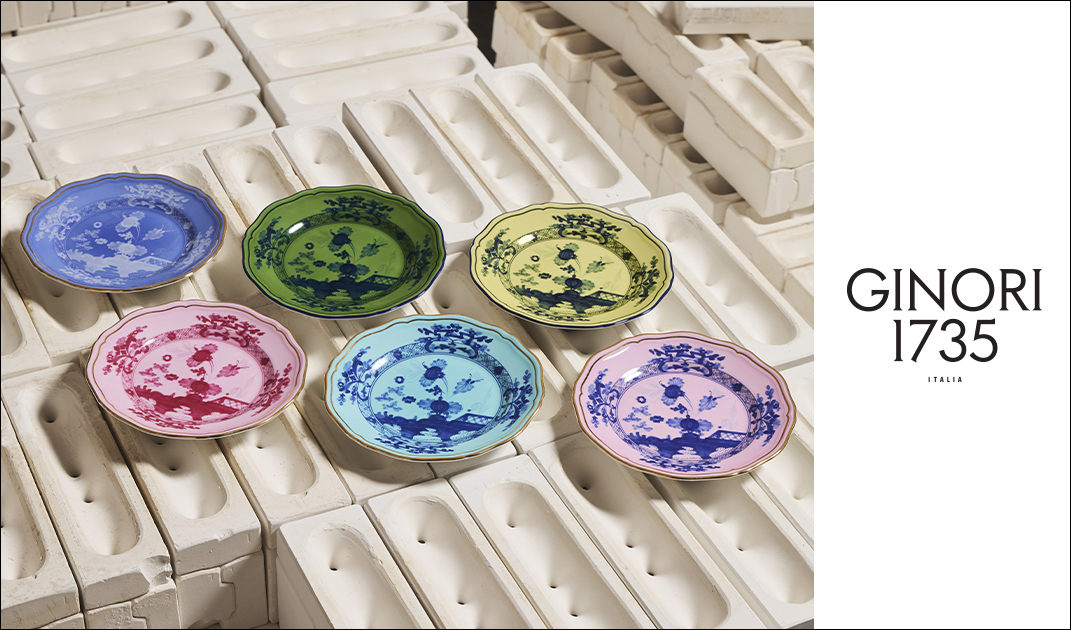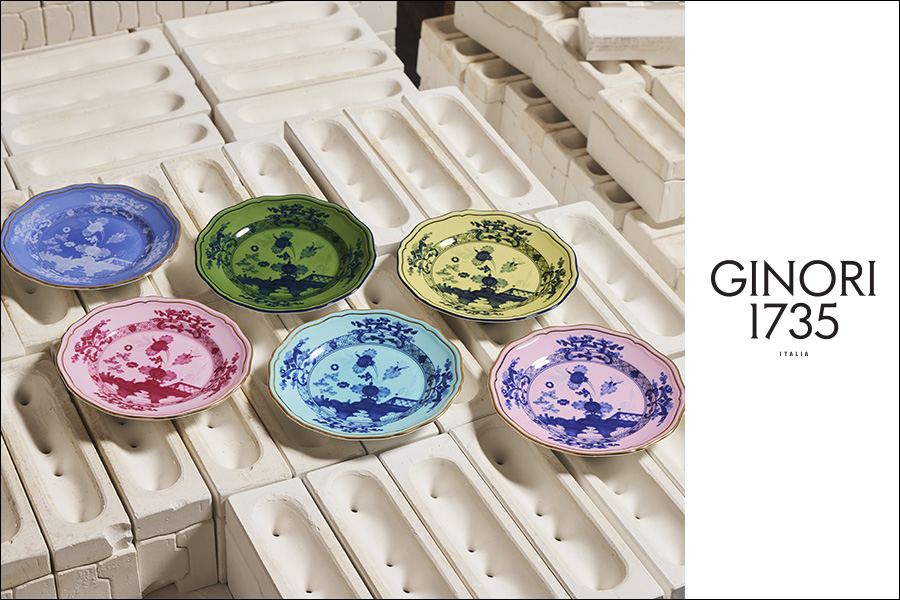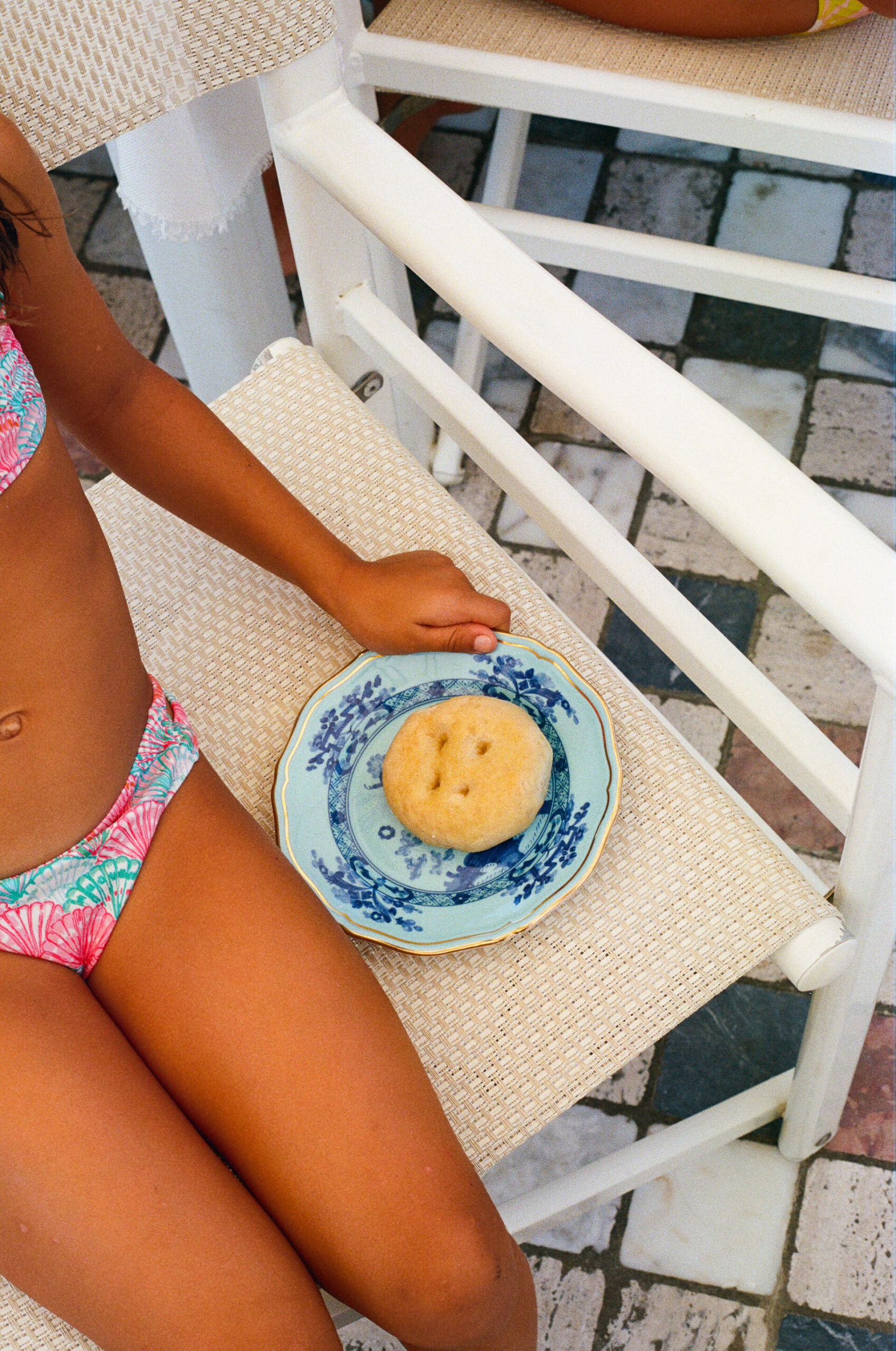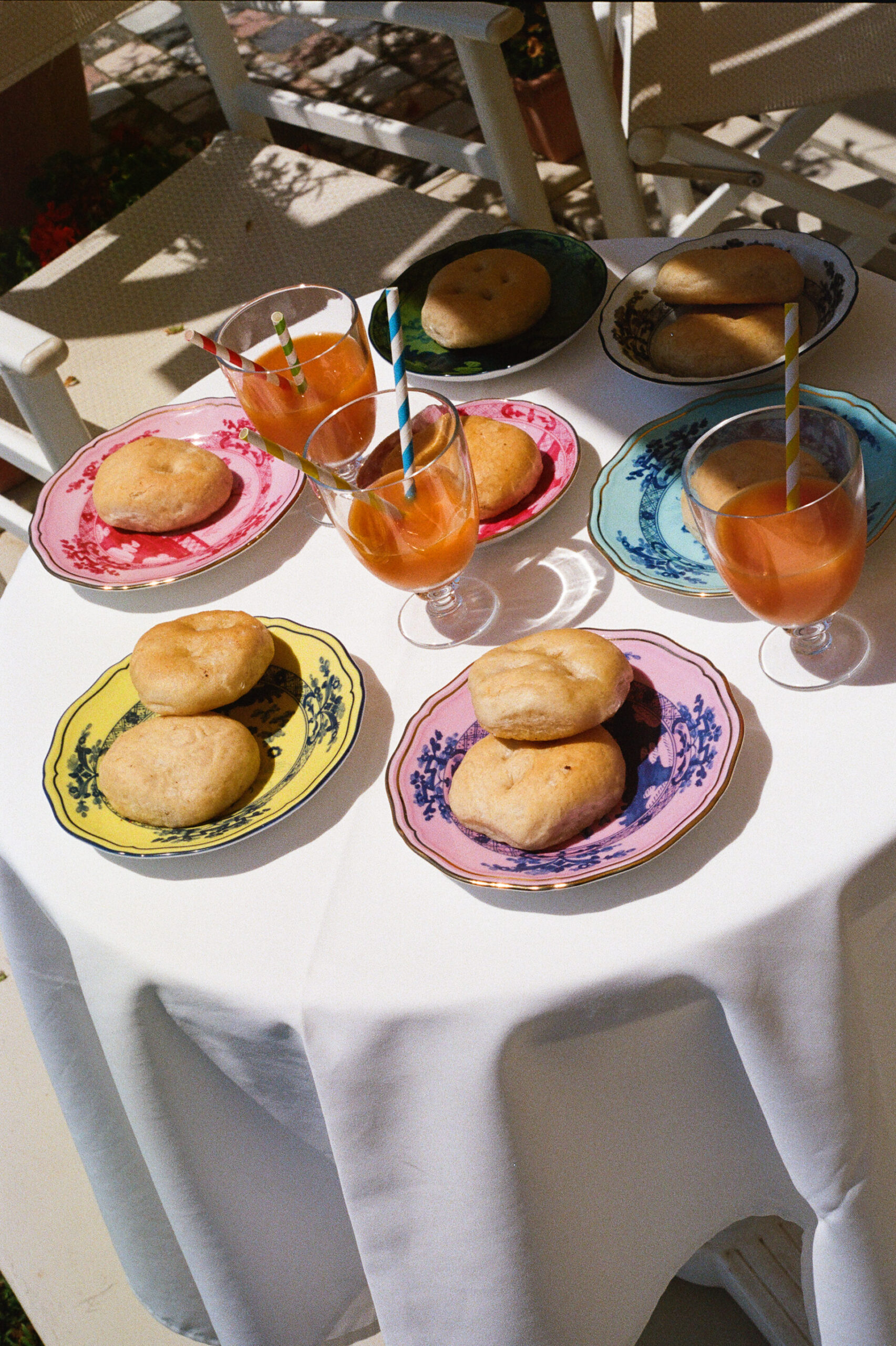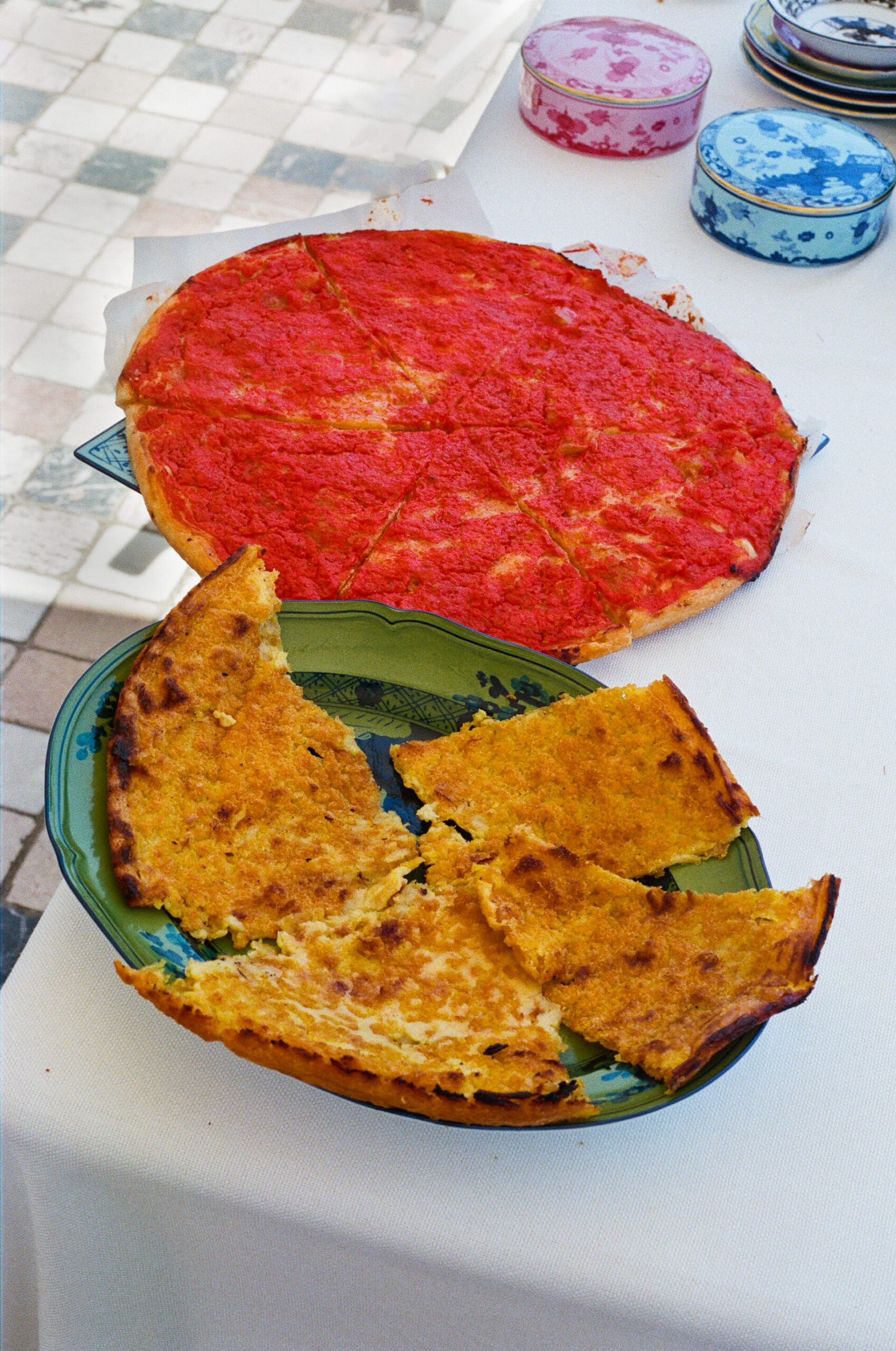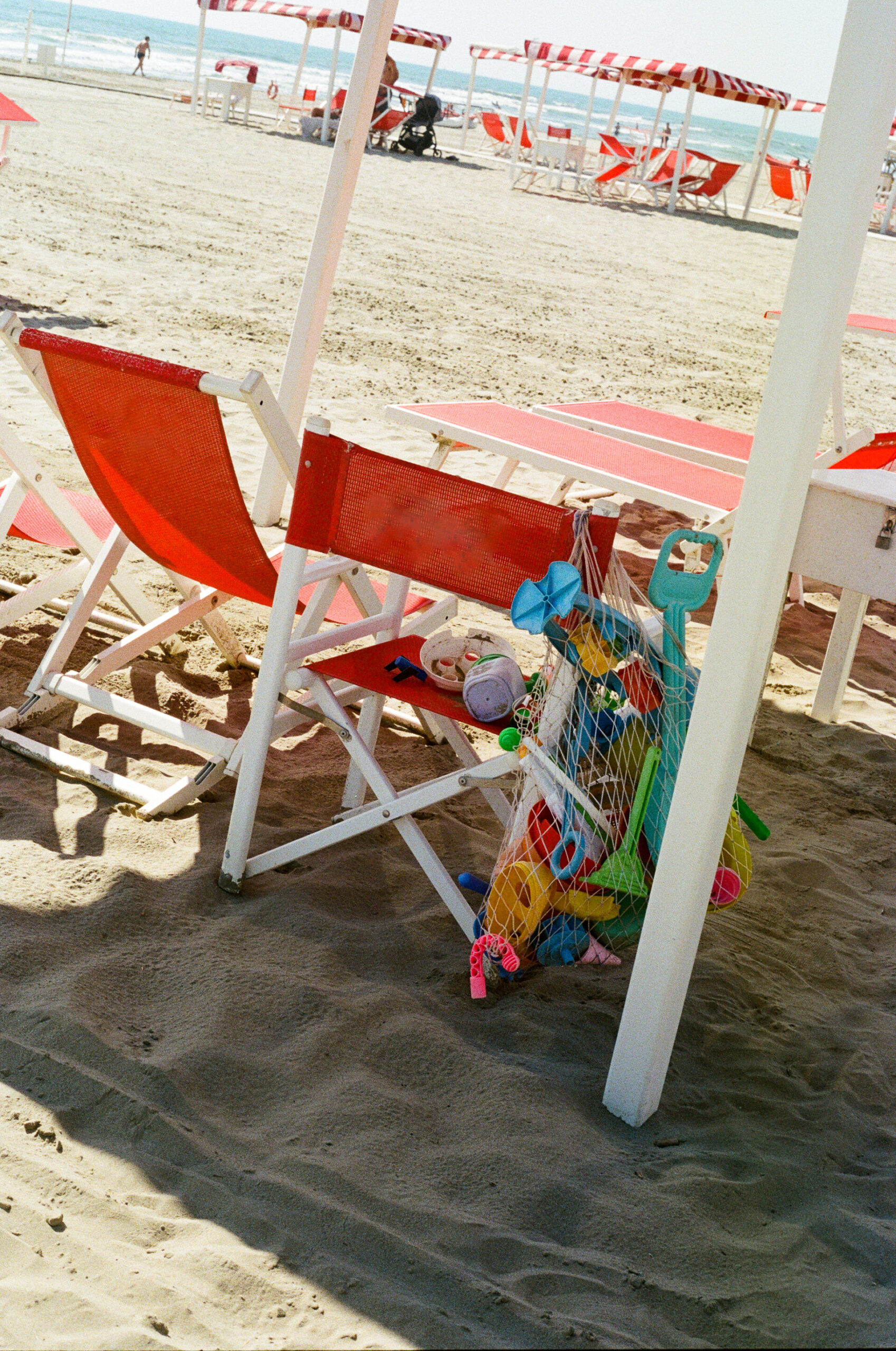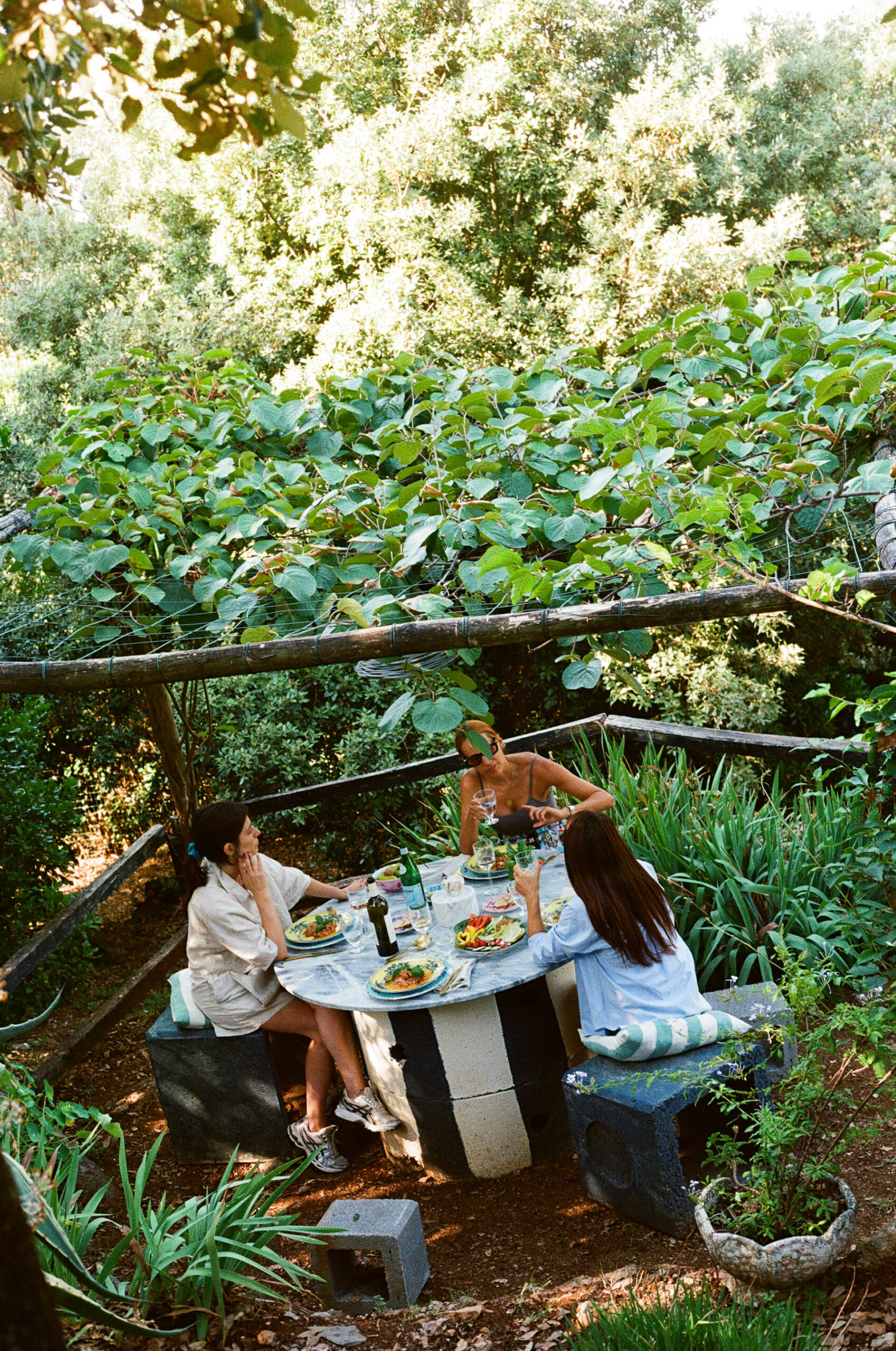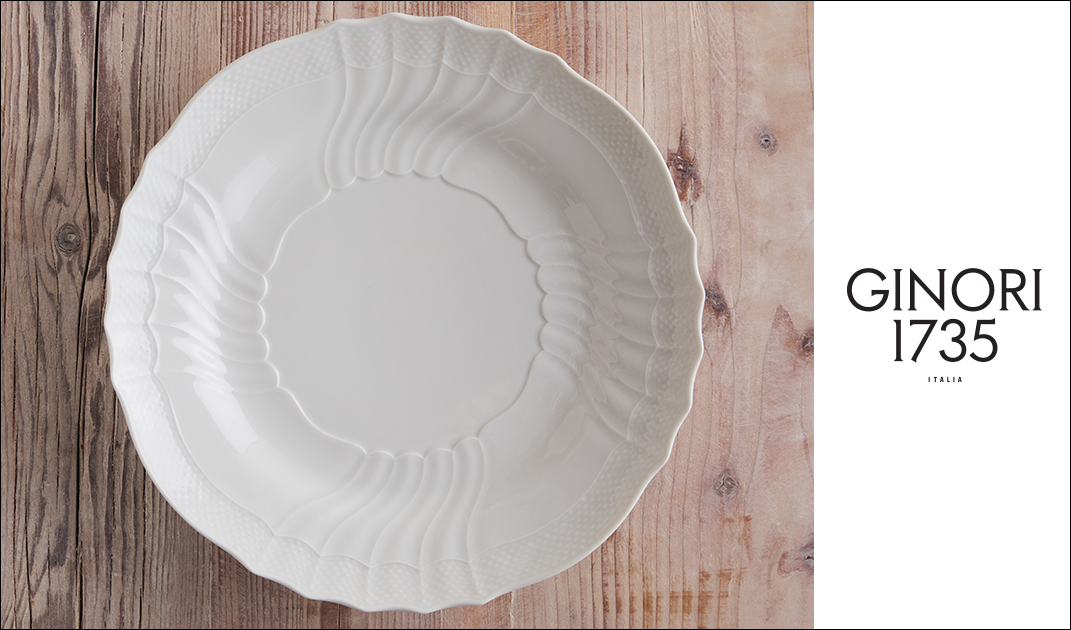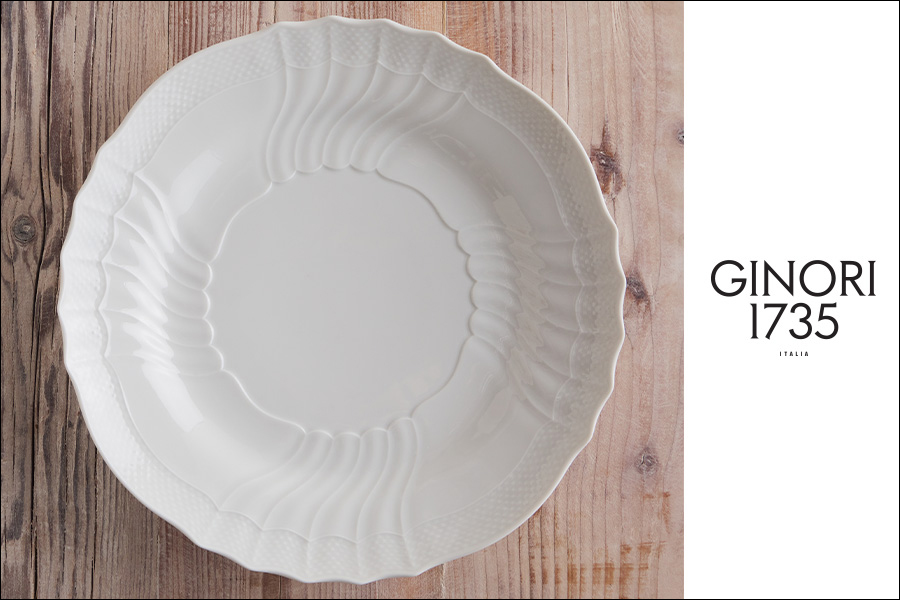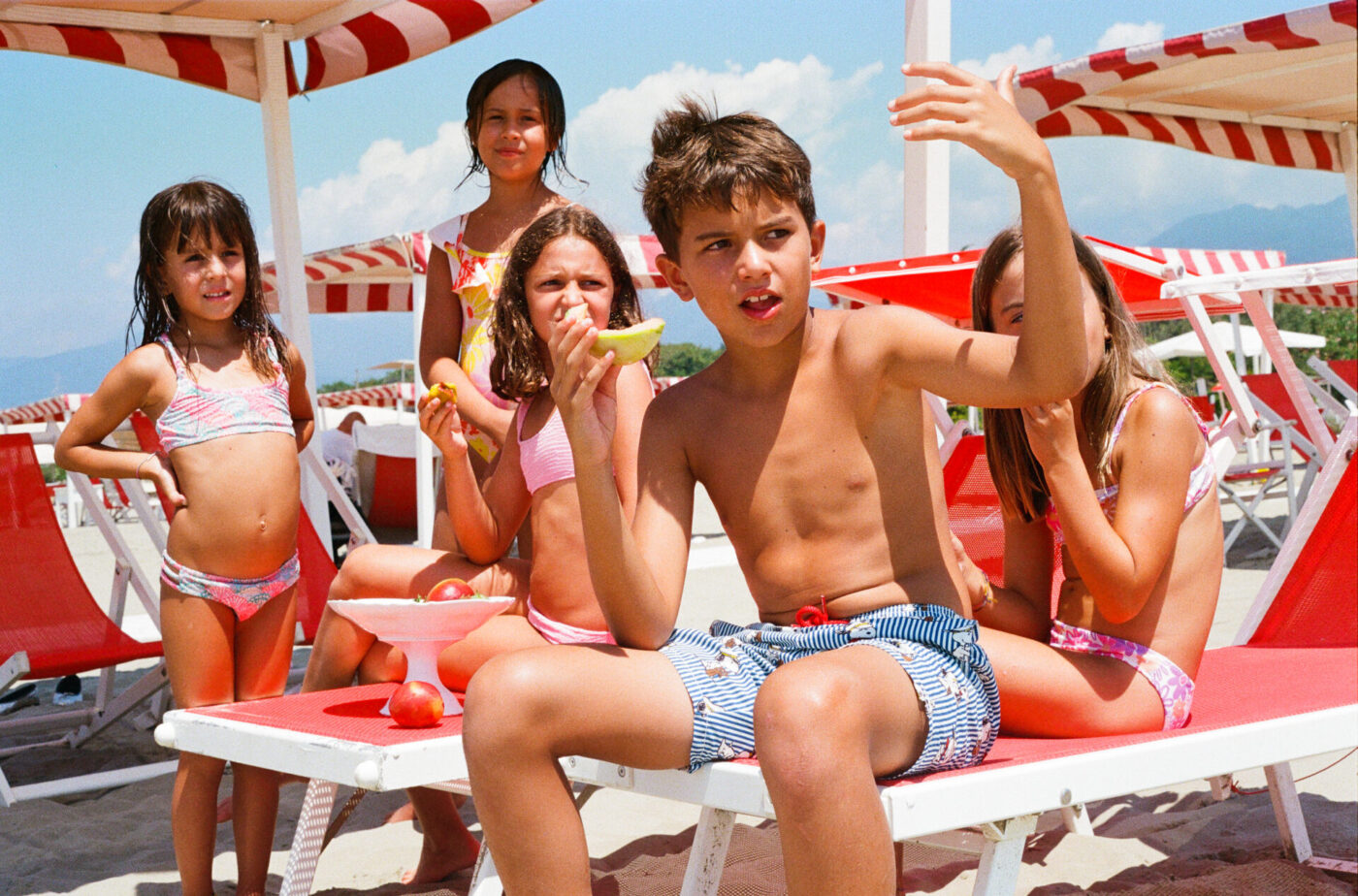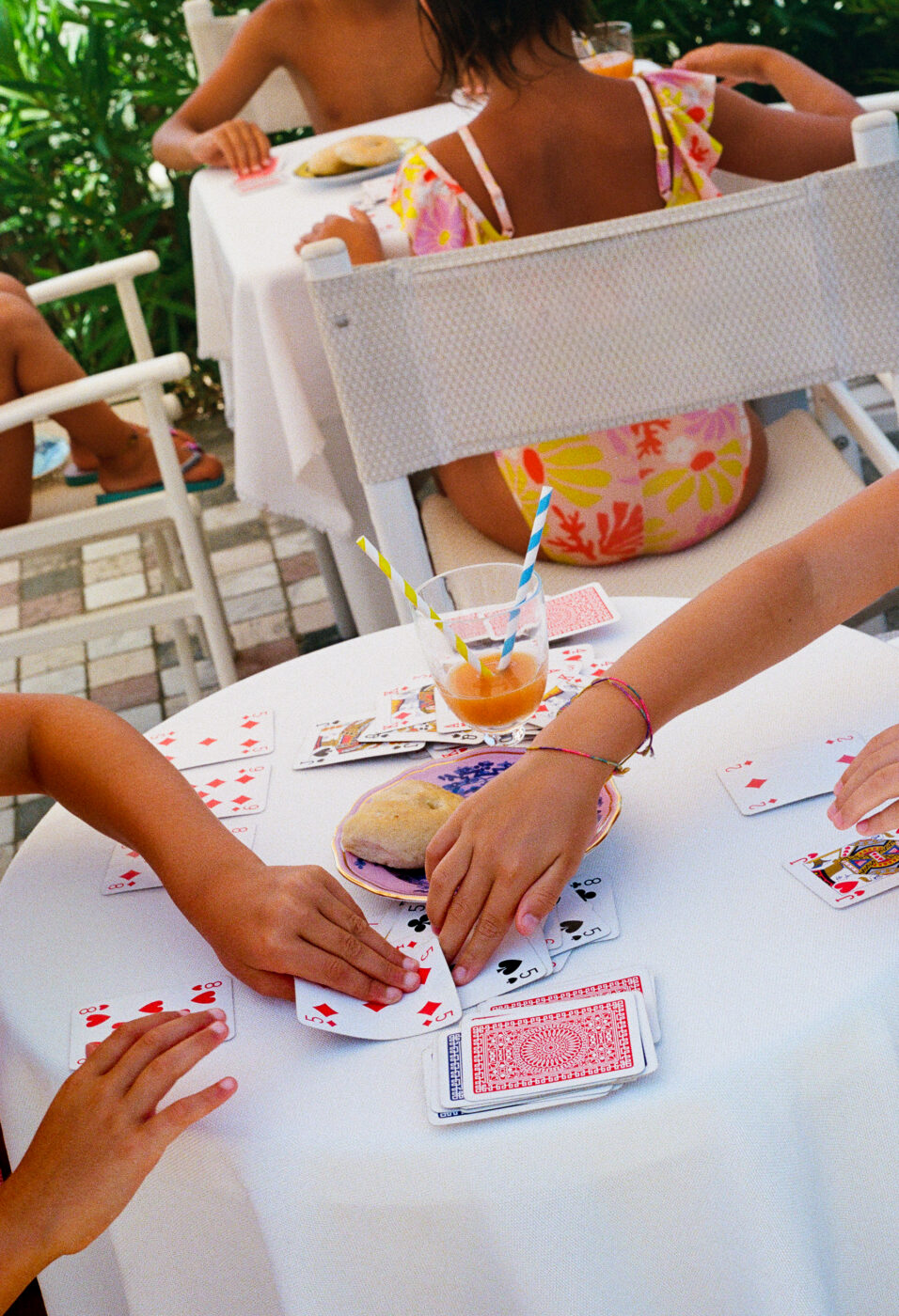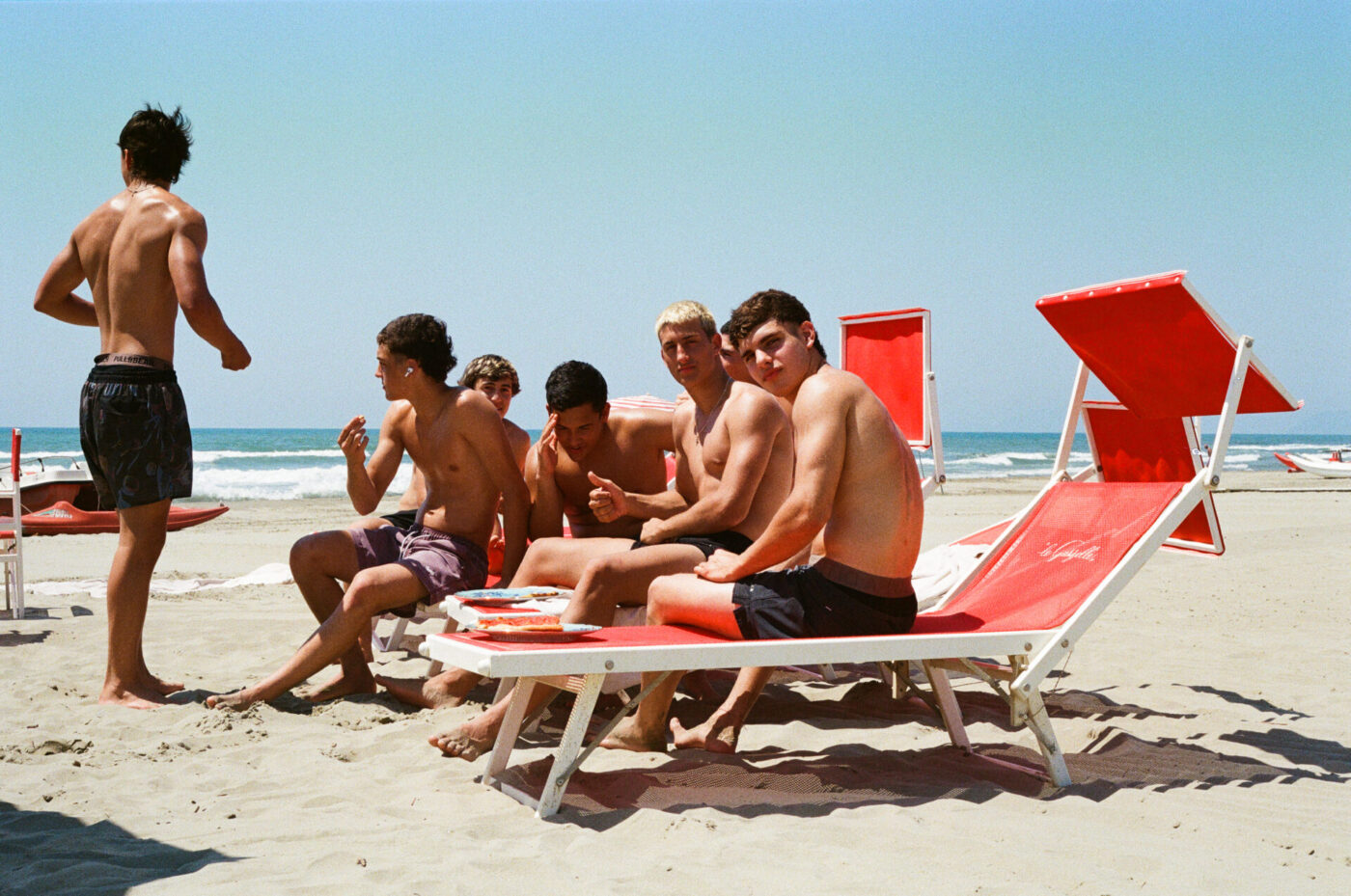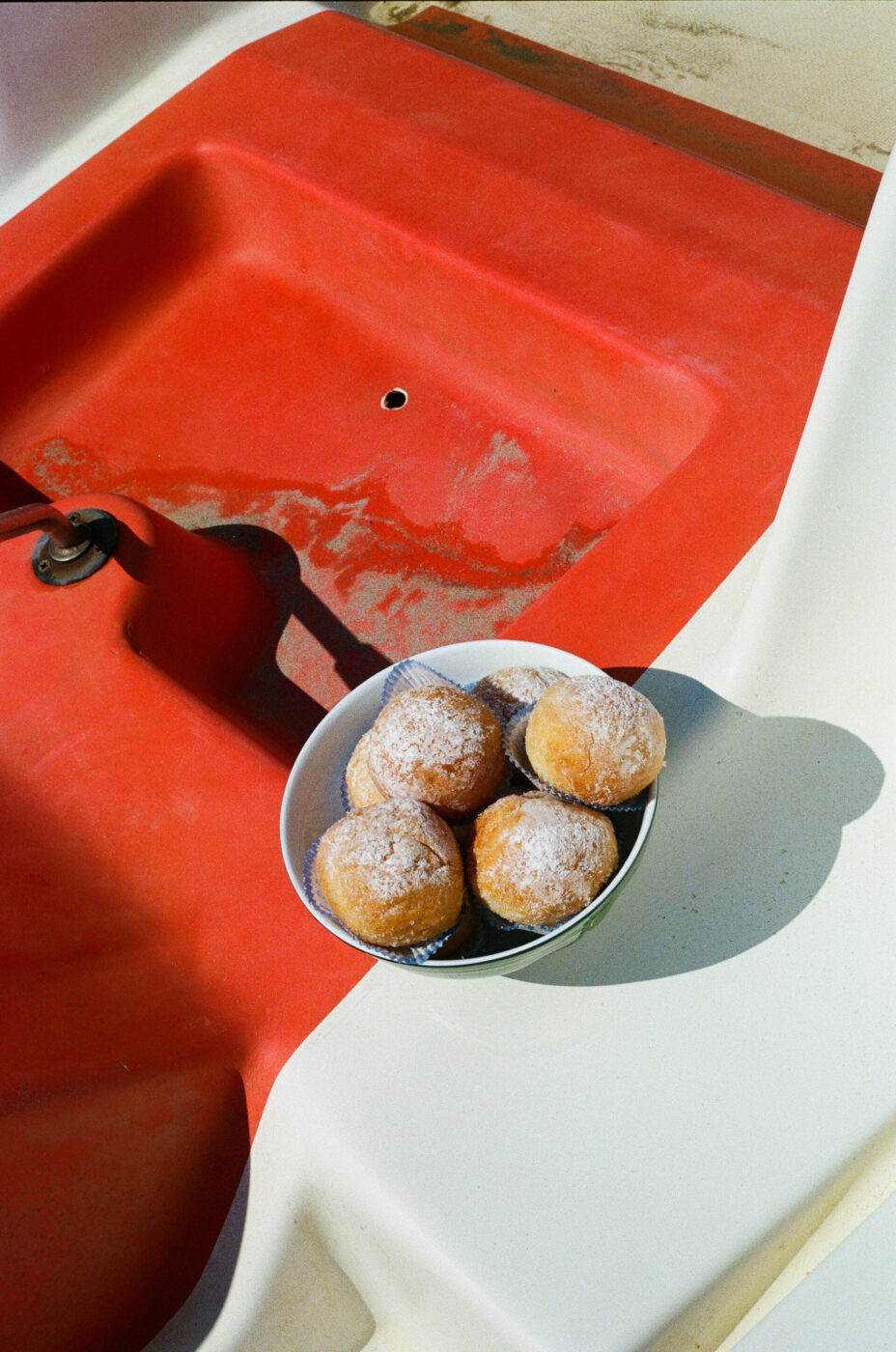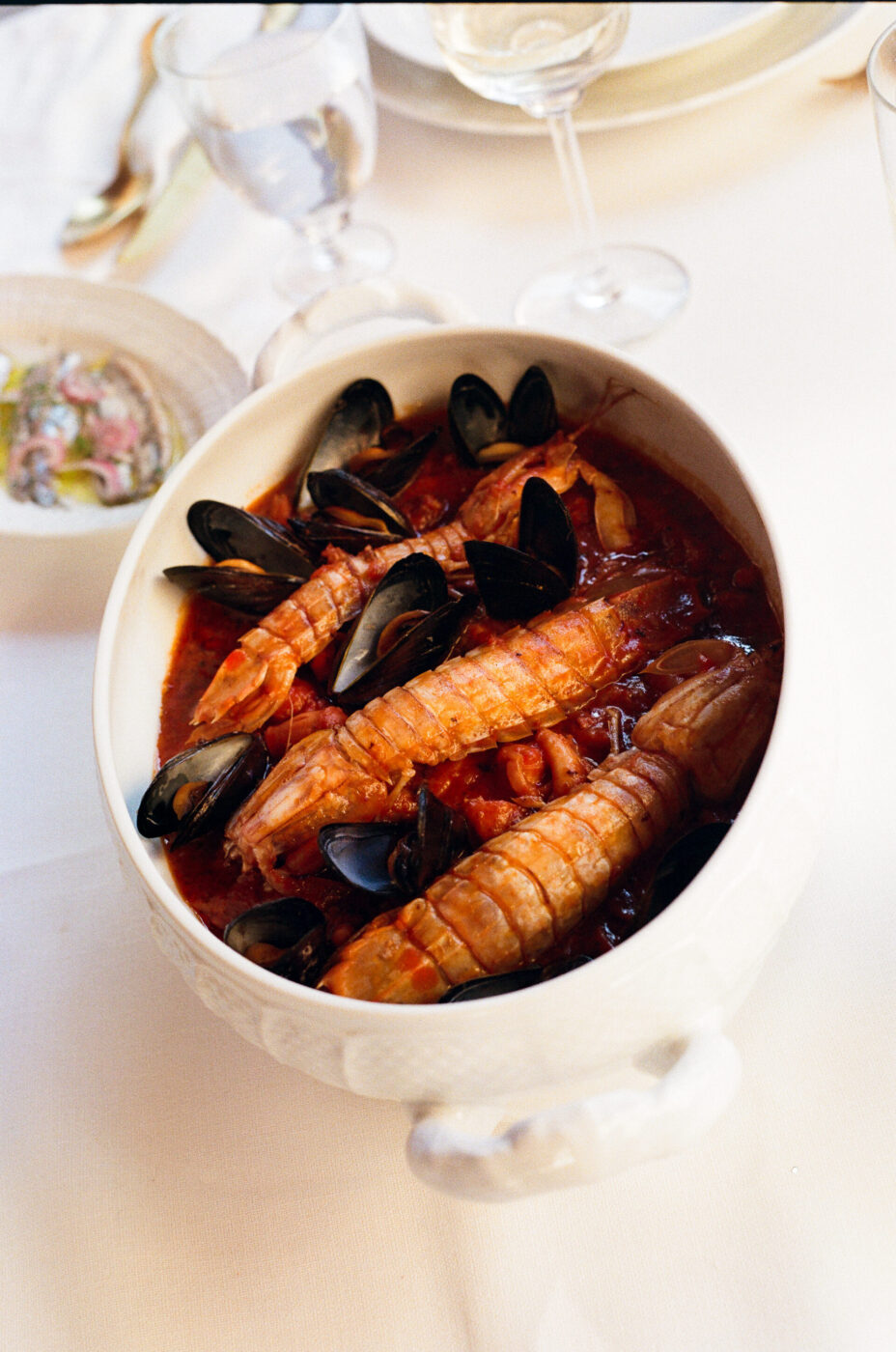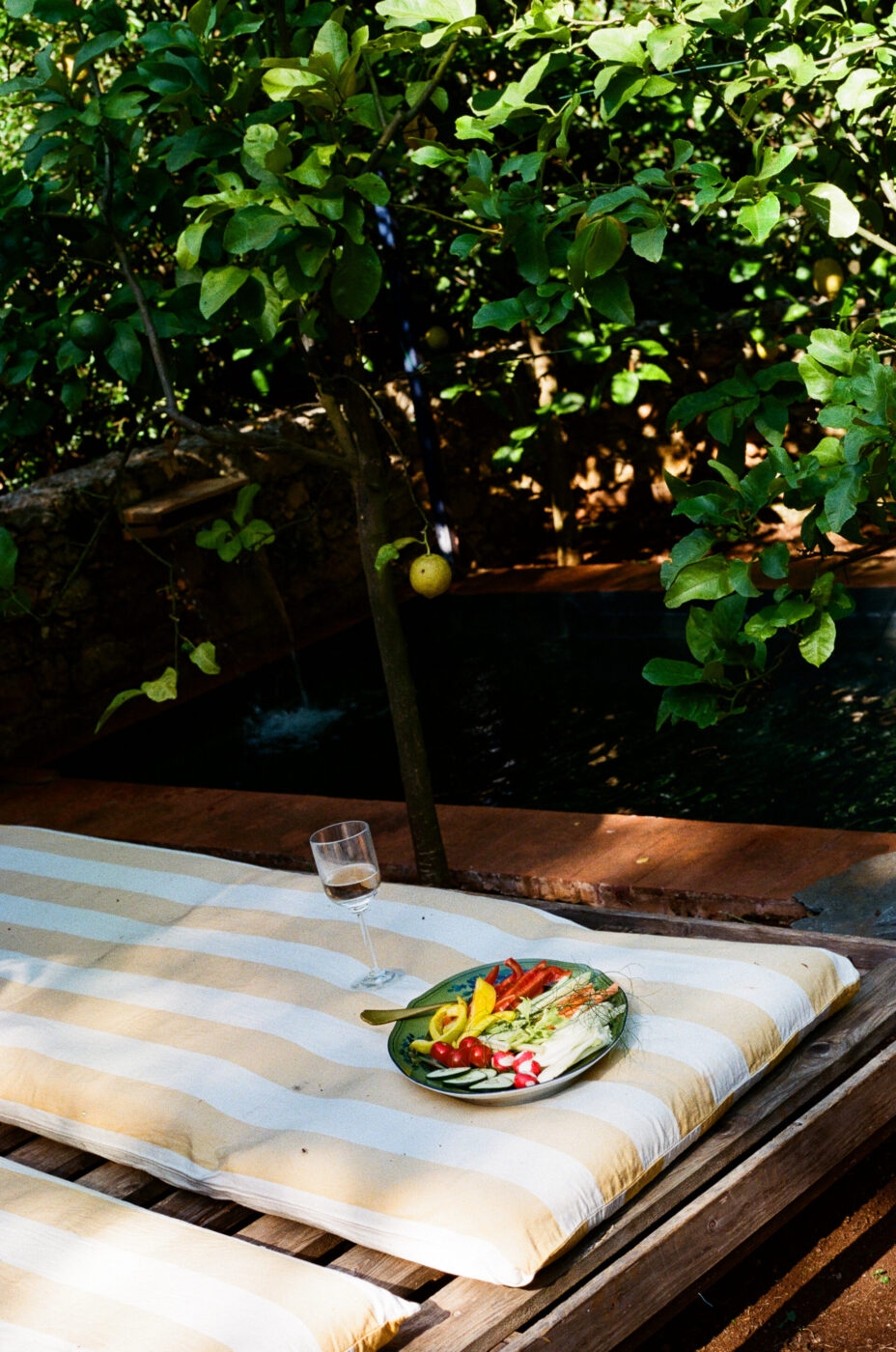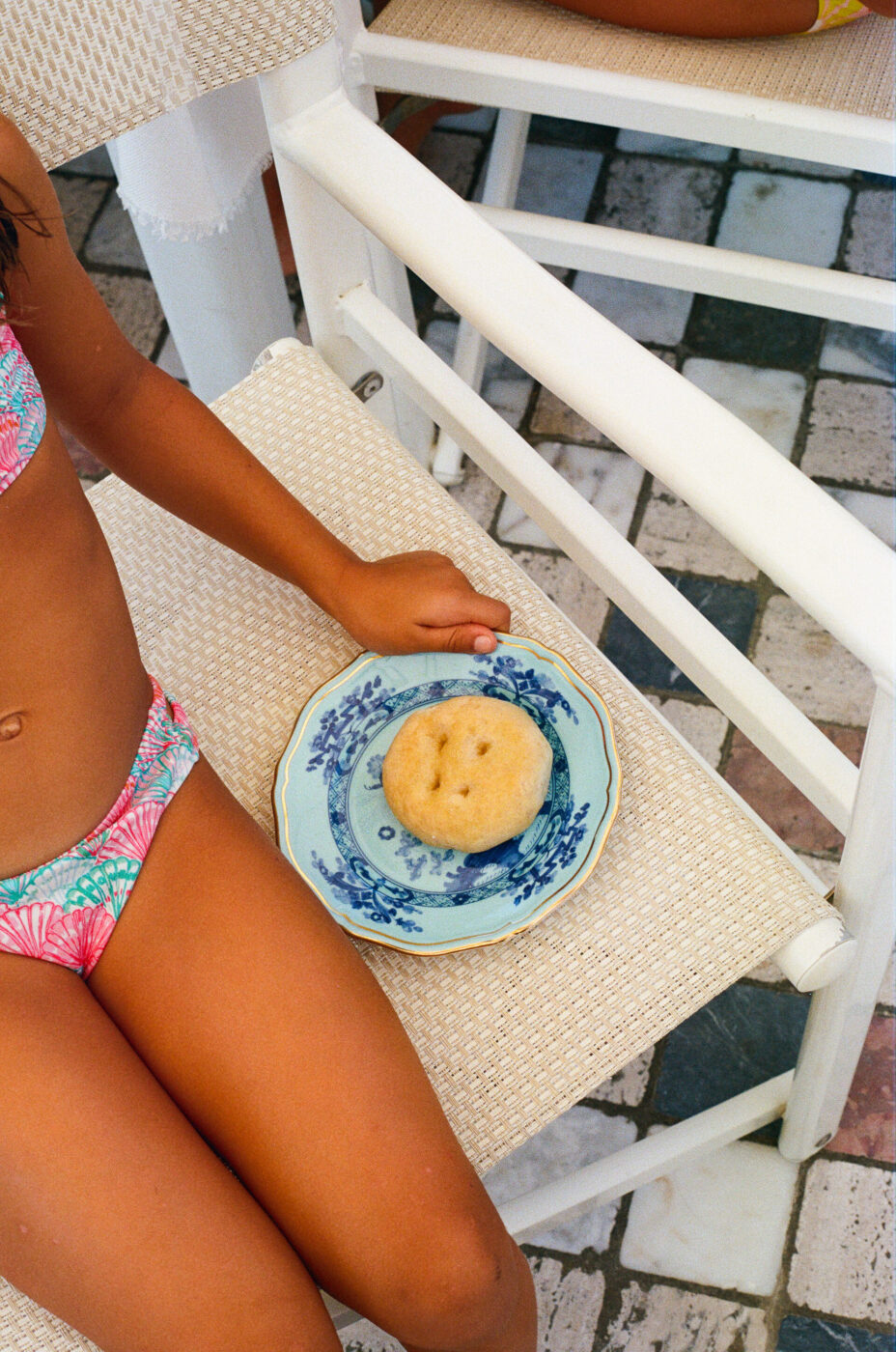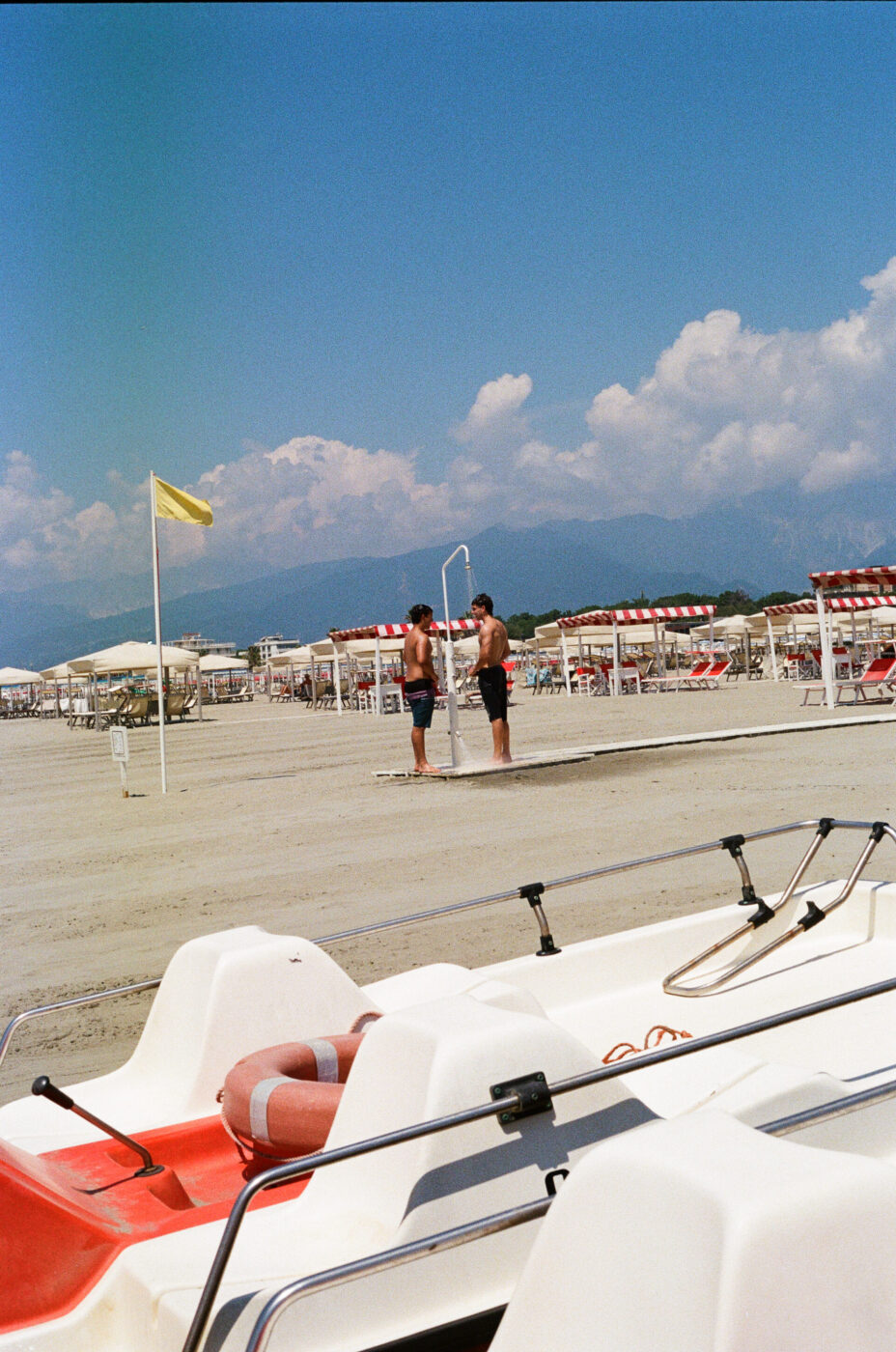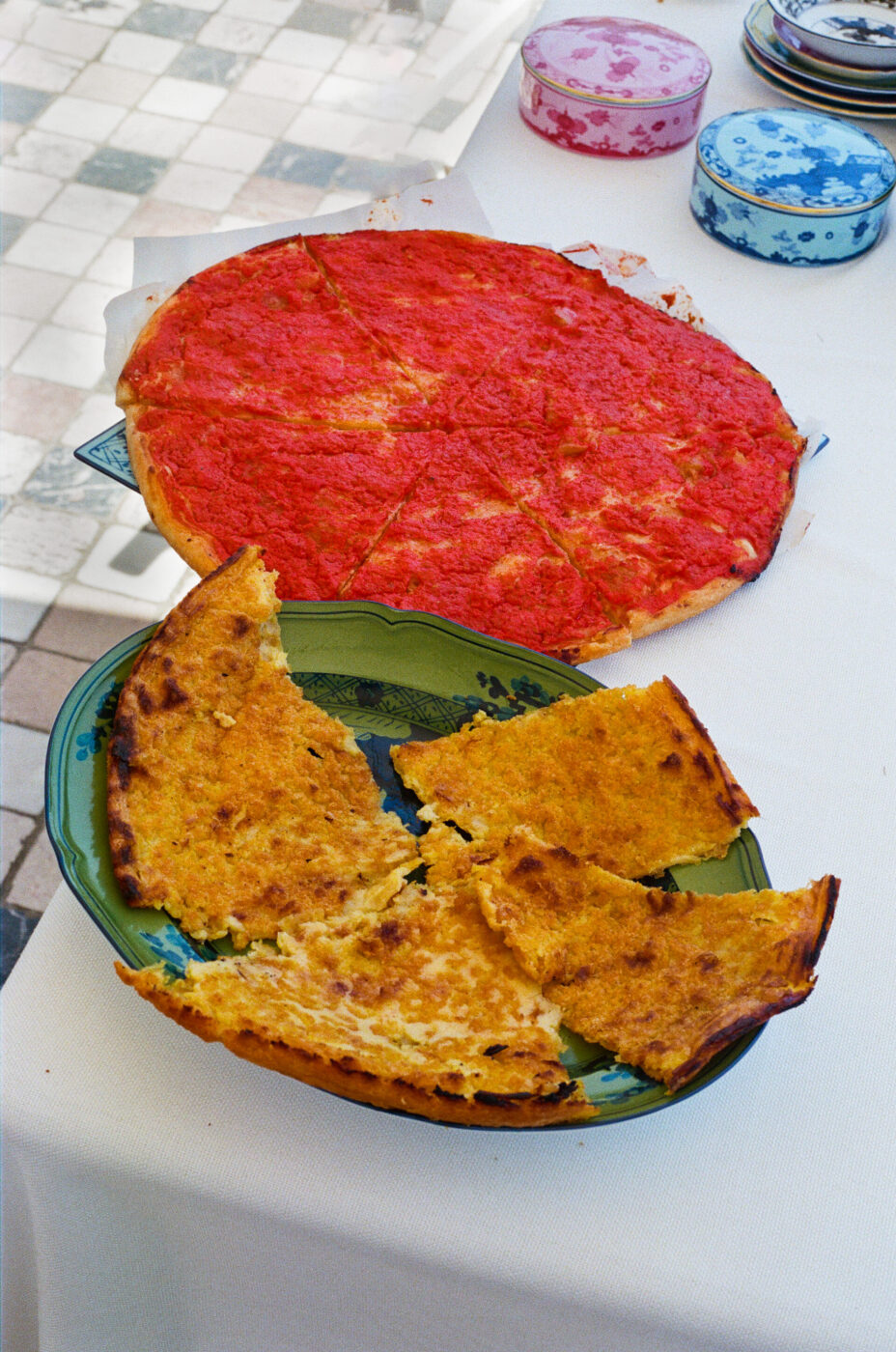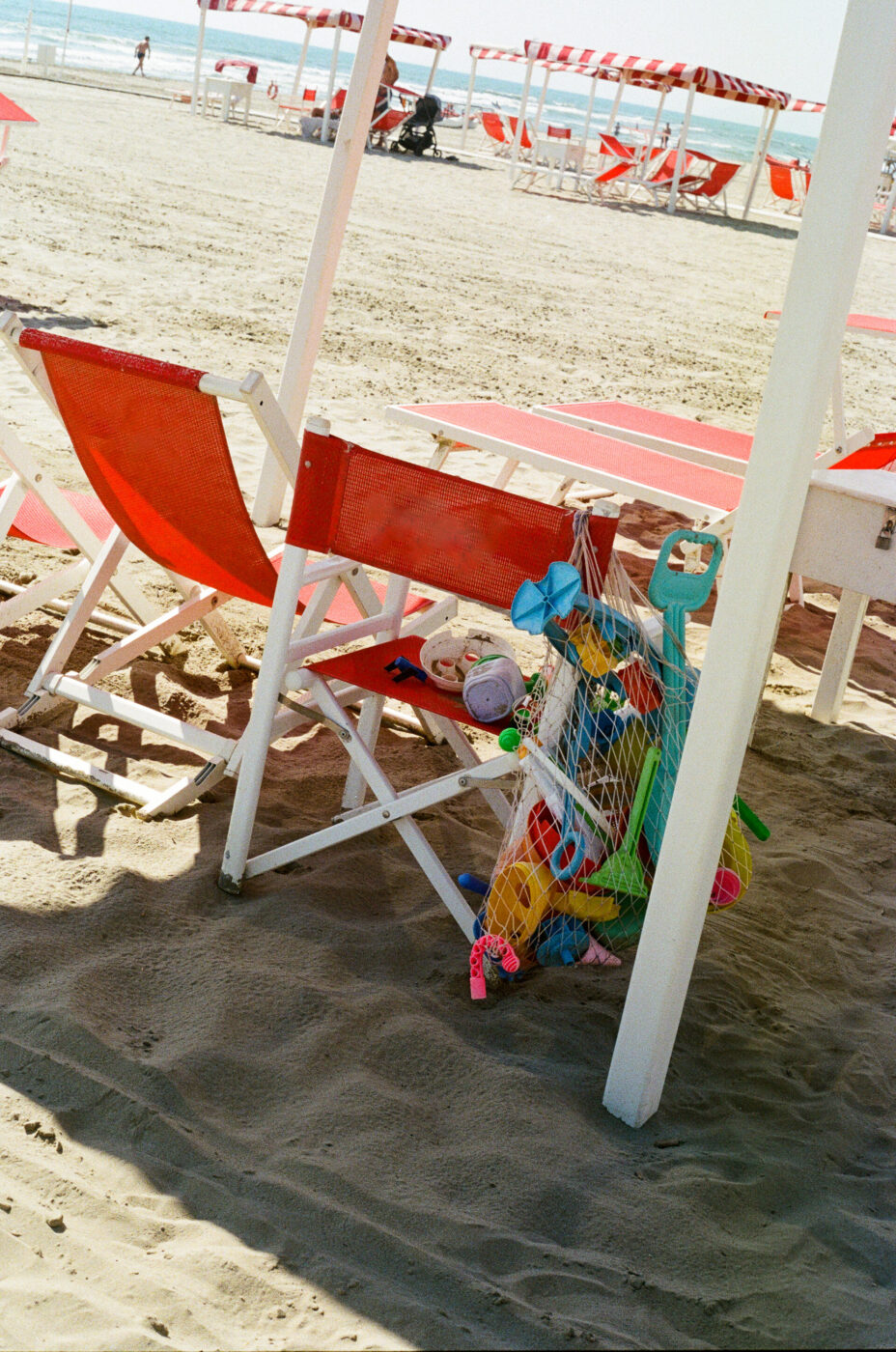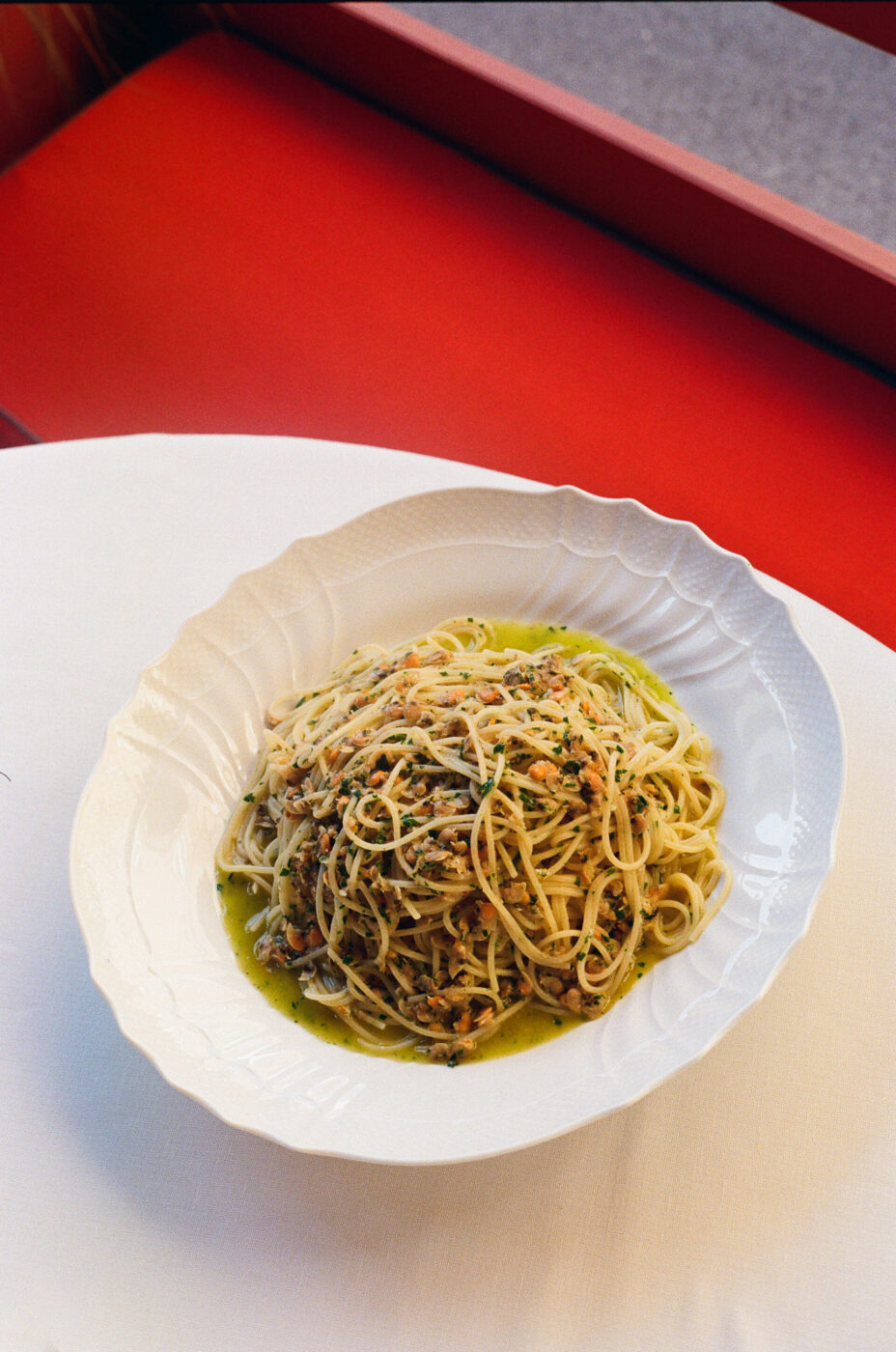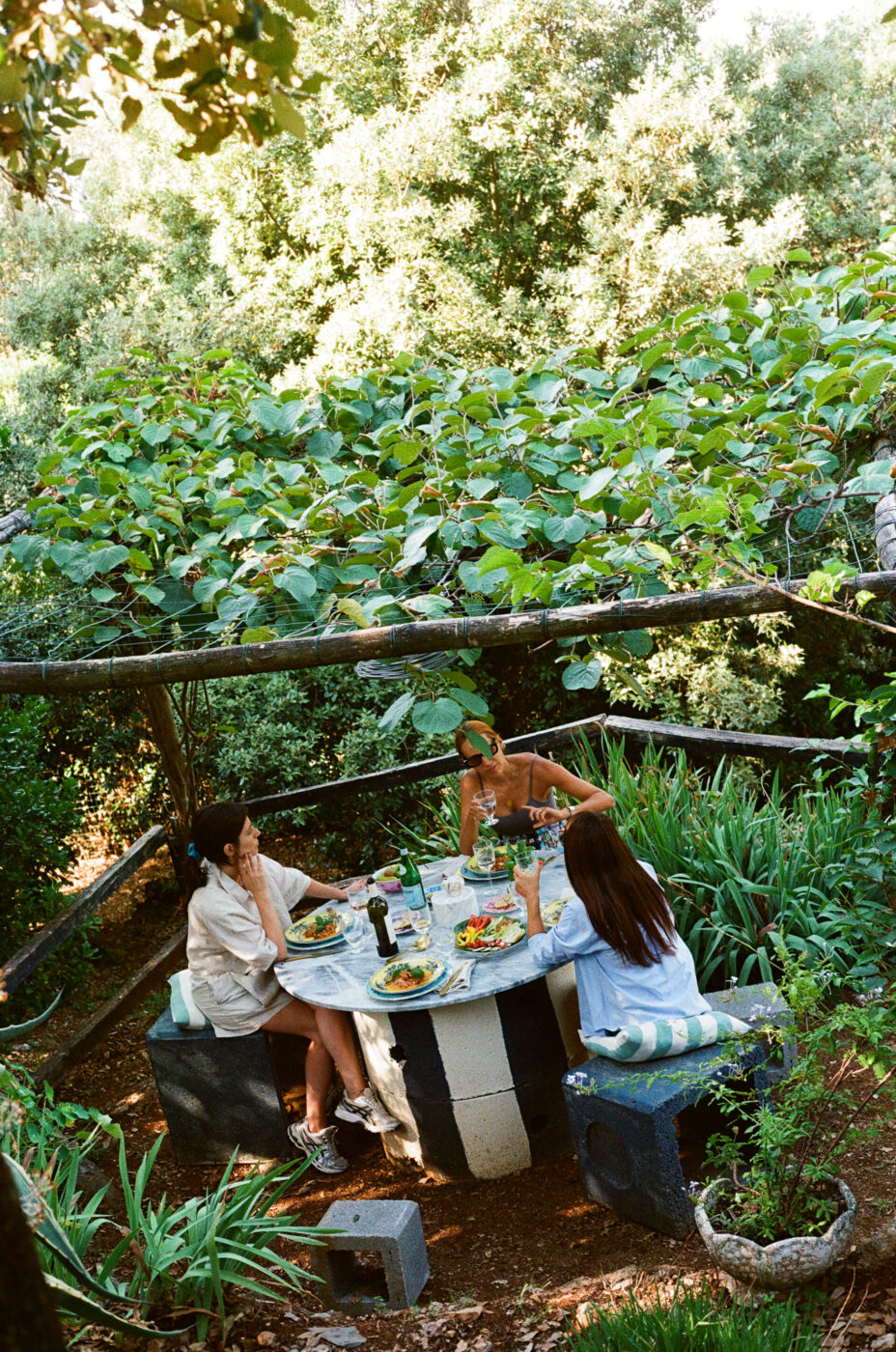In the soft Tuscan dawn, before the beach umbrellas unfurl, an old man steps onto the sand of Viareggio as he has every summer for decades. The air carries the salsedine—that distinctive mix of salt and sea breeze—and the promise of another sunny day identical to countless ones before. There is a saying in Italy: stessa spiaggia, stesso mare—“same beach, same sea”—a mantra of return and ritual. For generations of Italian families, villeggiatura (the extended summer holiday) in Versilia is routine, repeated year after year with exacting precision. It’s a tradition of coming back to the same strip of beach, the same bagno (beach club), often even the same spot under the same colored umbrella. We visited the coastline with Ginori 1735, the historic Florentine porcelain brand, to follow the daily summer routine and meet people who spend every summer of their lives here.
Versilia—the stretch of northwestern Tuscany hugging the Ligurian Sea between Lake Massaciuccoli and Marina di Massa—has lured Italians and visitors alike with its broad, sandy beaches since the 19th century. At the base of the Apuan Alps, whose peaks you can take in from the beach, this coastal belt has long been a playground for the wealthy Milanese and Florentine, and today, much of the buzz centers around Forte dei Marmi’s designer boutiques. On much of the coast, prices have risen, and some corners polished to a gleam, but the true, beating heart of Versilia, the original spirit of villeggiatura, can still be found in the likes of Viareggio and Marina di Pietrasanta.

The next generation on their villeggiatura
At Bagno Le Gazzelle Focette in Marina di Pietrasanta, current proprietor Francesca Tartarini points to one of her tables. “Stessa spiaggia, stesso mare, stesso tavolo dal 1955,” she says with a proud smile—the same table, on the same beach by the same sea, occupied by one loyal couple every summer since 1955. For sixty-odd years, that couple has lunched at Le Gazzelle under the red-and-white umbrellas, returning as faithfully as the tides. “Io sono la terza generazione” (“I’m the third generation”), she tells us, describing how her mother and grandmother before her ran this bagno. Her family’s stewardship began when her nonna worked here as a young employee, later managing it, and eventually taking ownership. Francesca carries on the legacy, and, in her lifetime, she’s watched children who once built sandcastles here return as parents, each new generation joining in the same age-old summer dance.
Such is the charm of Versilia’s seaside culture.
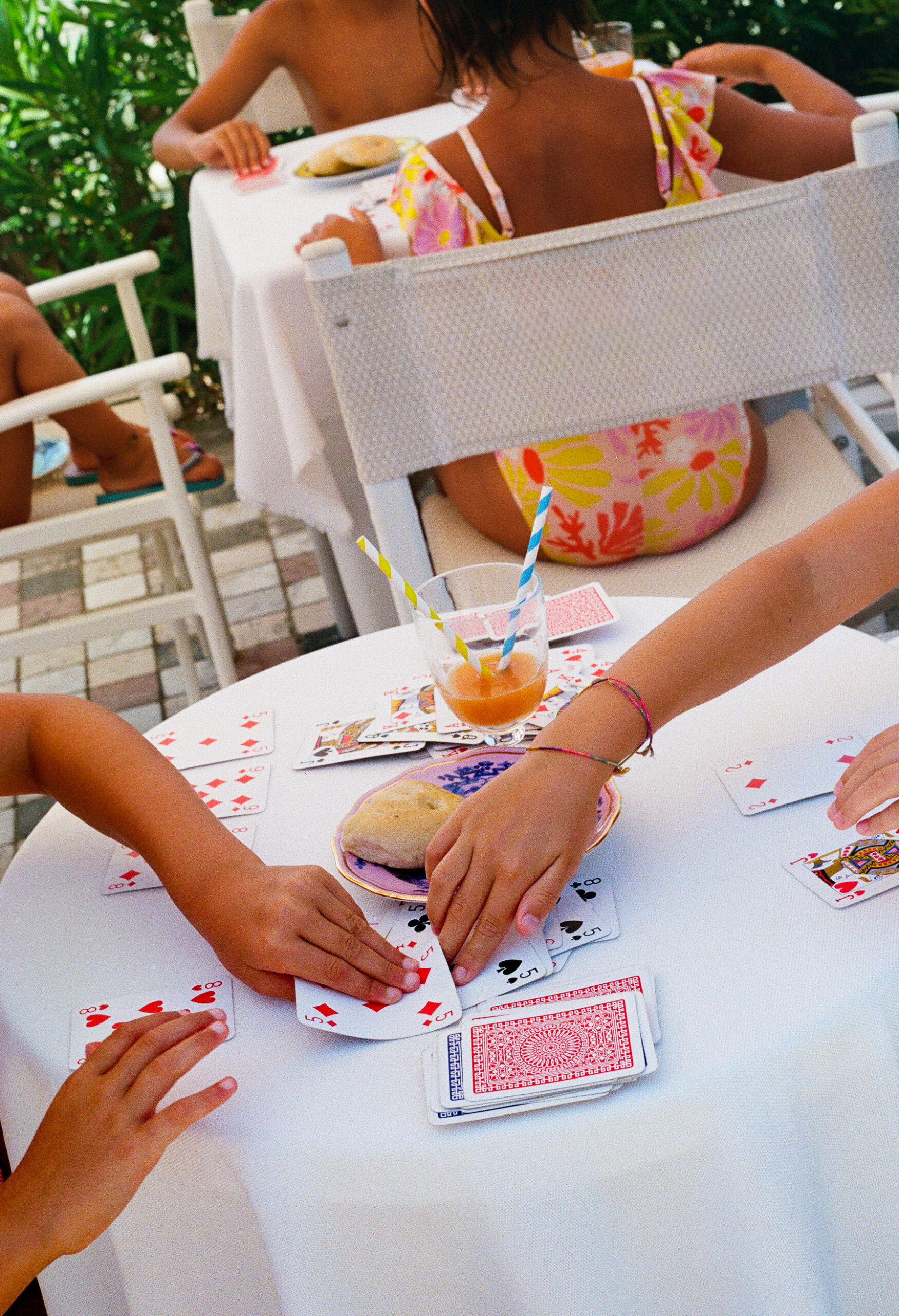
A few miles down the coast in Viareggio, Rebecca Larsson savors this sameness with intimate appreciation. Born and raised in Viareggio, Rebecca jokes that she never “chose” to summer here: “ci sono nata dentro” (“I was born into it”). Each year as a child, once school let out, the season would stretch ahead like a warm, lazy eternity.
“Era proprio il tempo che si fermava” (“It was just time that stood still”), she recalls. For nearly three months, every day passed more or less the same way, and yet “la cosa più incredibile è che… non mi ha mai annoiata”—incredibly, it never bored her. Far from monotony, the ritual became “a meditative routine.”
In her “normal life” the rest of the year, Rebecca is used to planning and scheduling every hour. But summertime in Viareggio taught her the opposite: how to surrender to a different tempo. “È come se seguissi questo flusso… che mi dà la possibilità di rilassarmi” (“It’s like following a flow that truly allows me to relax”), she says. The only “big” decision of the day might be what to do in the evening.
As a little girl, she knew that when dusk fell “there was always some sort of activity” awaiting: il luna park (the fairground rides that pop up in summer) or le cosiddette vasche con gli amici, meaning the evening stroll up and down Viareggio’s lungomare. Armed with a gelato in hand, locals walk the promenade in a looping parade—fare le vasche, doing “laps”—greeting familiar faces or perhaps “bumping into” their crushes. As she grew older, Rebecca joined the teenagers slipping into the legendary Versilia nightlife, dancing at the discotheques the coast is famous for.
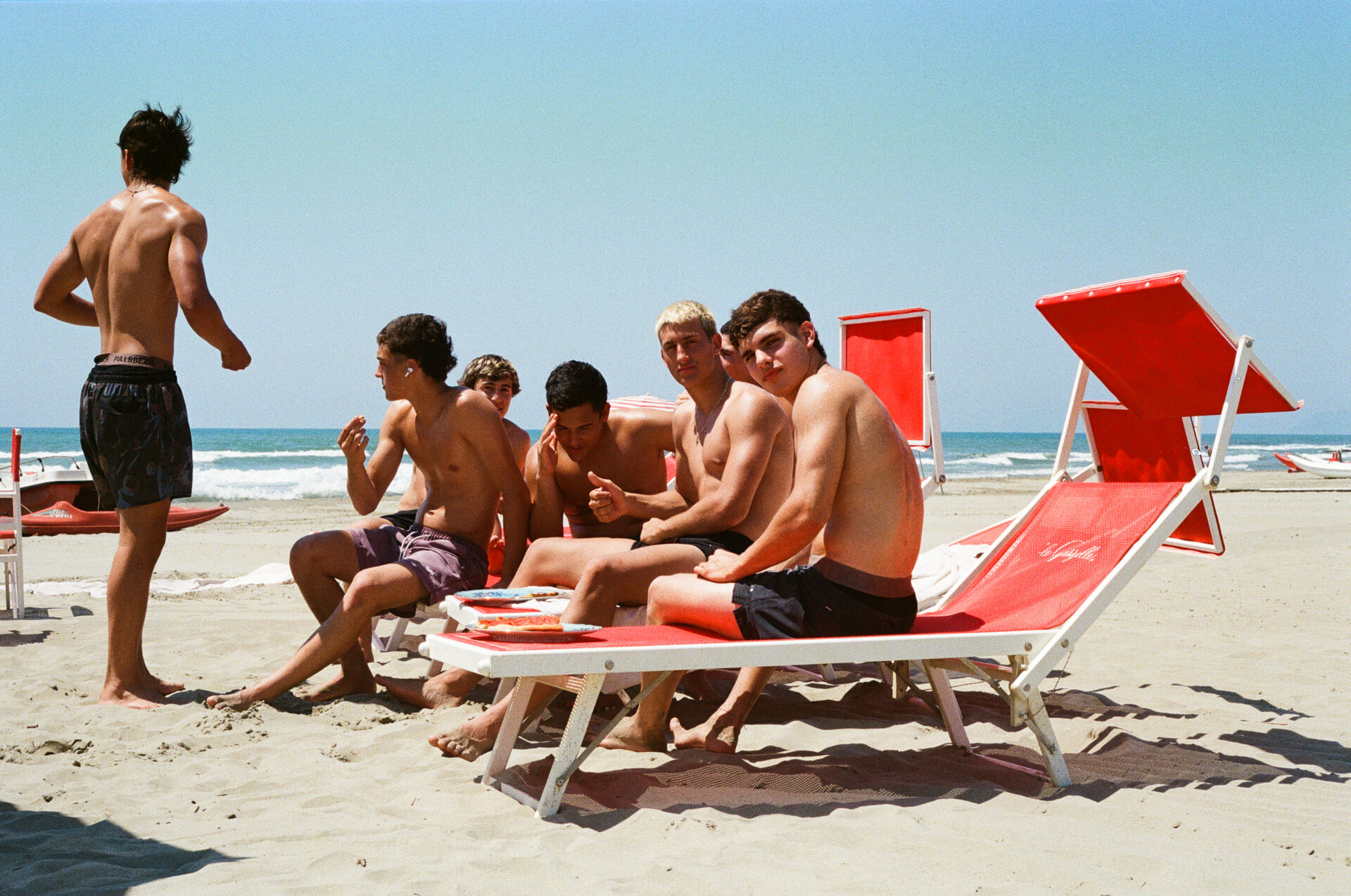
Even those who never stepped inside know the most iconic among them: La Bussola. Opened in 1955 by visionary impresario Sergio Bernardini, La Bussola’s stage is where Mina made her nightclub debut, where Louis Armstrong, Ella Fitzgerald, Duke Ellington, Juliette Gréco, Charles Aznavour, Gilbert Bécaud, Ray Charles, and Aretha Franklin all performed under its spotlights. Here, actors and musicians would mingle with the Milanese bourgeoisie, Florentine intellectuals, and sunburnt teenagers having their first taste of freedom. Bernardini’s genius was mixing highbrow international jazz with rising Italian pop and bohemian edge, turning La Bussola into a beacon for both cultural experimentation and elite hedonism.
Now in adulthood, Rebecca finds herself coming full circle. “The routine I had as a child, I’m now re-creating for my own children,” she tells us, and remarkably, “the days are exactly the same as those I lived 20 or 30 years ago.”
“It’s amazing how they love this thing too,” Rebecca notes with a laugh. They’ve even formed their own amici del mare, “friends of the sea,” those special summer friendships with the kids from the neighboring beach umbrellas that spark to life in July and pick up exactly where they left off a year later.
No summer routine in Viareggio would be complete without its daily rituals, and here too the theme is continuity. Take the morning pilgrimage for bomboloni, donuts golden-fried, dusted with sugar, and oozing crema chantilly. Pasticceria Patalani, a beloved pastry shop with royal-blue awnings, has been serving them to generations of sweet-toothed beachgoers. Theirs are famous not only for being delicious, but also for their nontraditional, muffin-like shape, a quirky twist that has nevertheless become a Viareggio trademark. Bakeries like Patalani and Pasticceria Gambalunga, just down the road since the late 1800s, haven’t changed much since they opened. “My dad has been a pastry chef since he was 12, and has had Gambalunga for 45 years,” says Sabrina Benassi, behind the wood-paneled counter and surrounded by glass cases filled with marzipan and millefoglie.
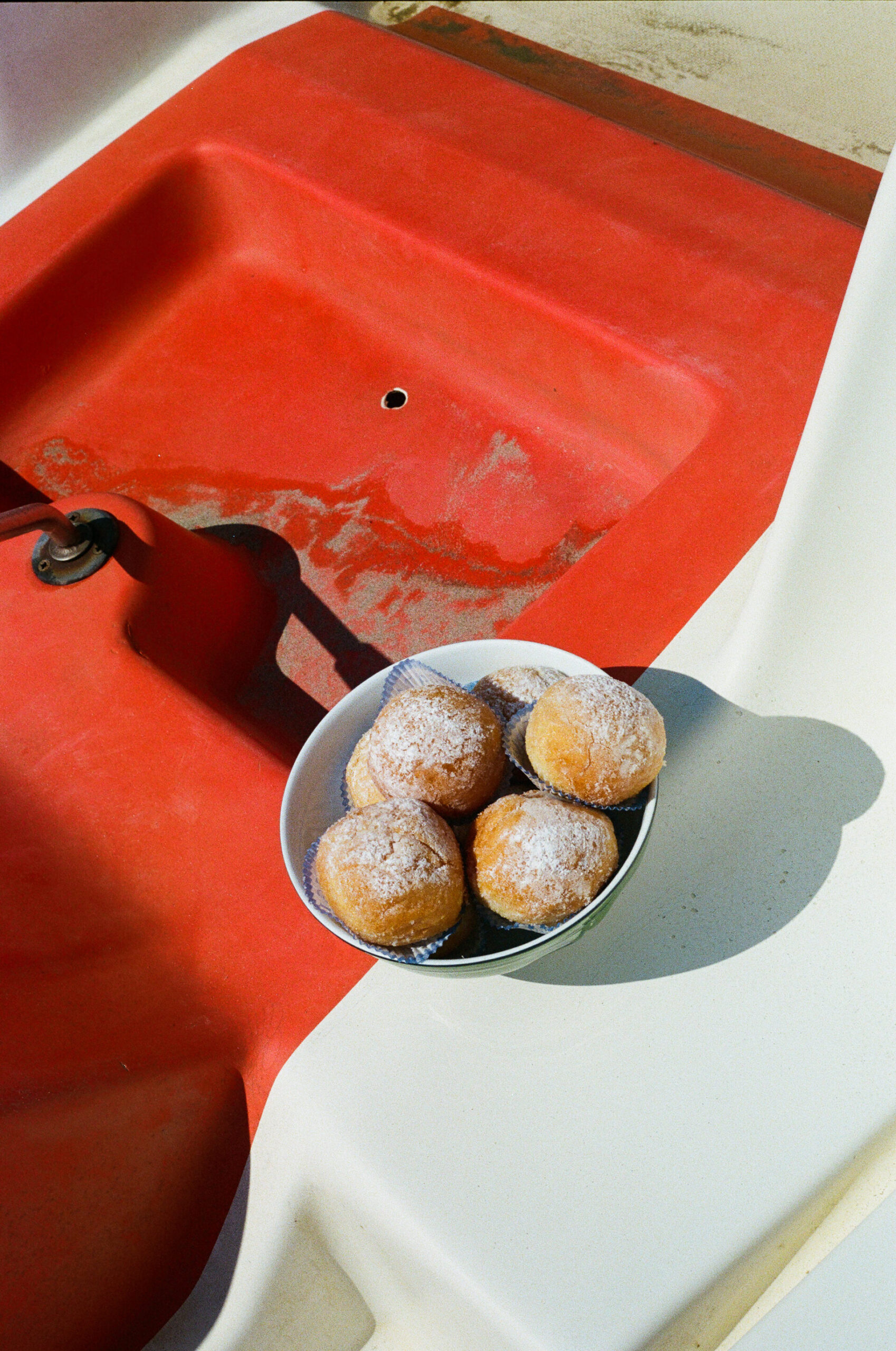
The best summer breakfast is bomboloni
By late morning, the beach beckons once more. Many families stock up for lunch at their cabanas, grabbing supplies like cecina, a thin chickpea flour flatbread that’s become a Tuscan seaside staple; one of the legendary local spots for the stuff is Pizzeria da Rizieri, founded in 1938. Others might opt for a sit-down meal of Versilia classics like cozze ripiene (stuffed mussels), spaghetti alle arselle (spaghetti with clams), the rich fish stew cacciucco, and pasta alla trabaccolara, a primo with a ragù made from various fish fillets, tomato, and parsley.
The latter is named for the “trabaccoli [boats] that belonged to the fisherman who came from San Benedetto del Tronto [in Marche] to fish in Viareggio because the sea was richer,” says Lena Larsson, who owns Trattoria Buonamico with her husband Leonardo Larsson; the trattoria has the distinction of being Versilia’s oldest restaurant still in operation (it opened in 1901). “I learned all the old, traditional recipes from Nonna Rina,” she tells us. “We still make many dishes that come directly from her.” At Buonamico, you can even sit at the same corner table where, legend has it, artists like Lorenzo Viani and Galileo Chini traded sketches for spaghetti in the 1920s.
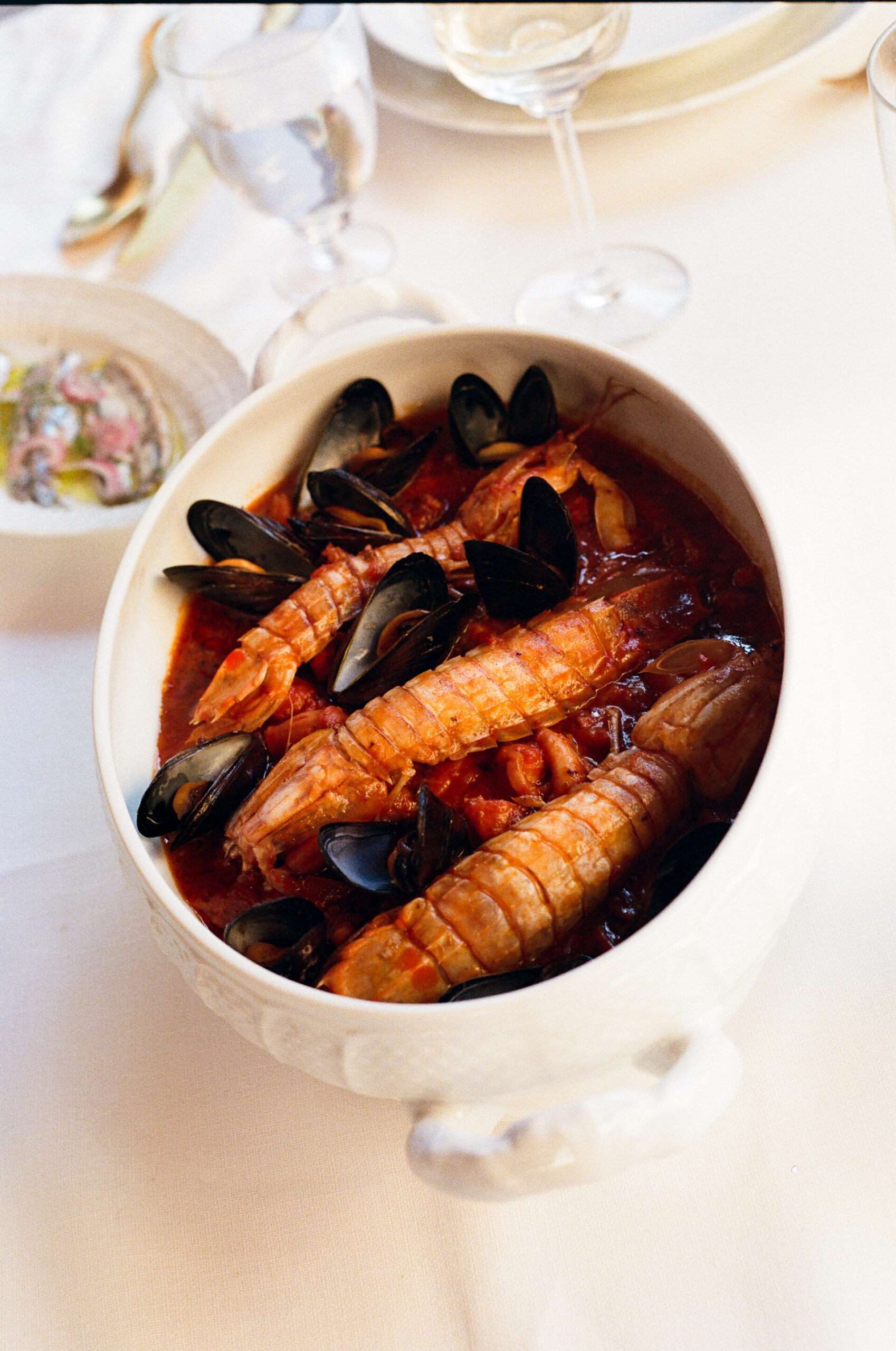
Cacciucco
What’s in order after “long days between the sea and the forest, bikes instead of cars, breakfasts under the pines” is “sunsets to watch in silence,” says local Serena Dal Soldato, who owns farm-style restaurant and guesthouse LABottega. We ask what villeggiatura means to her. “It’s a discreet kind of vacation, made of simple gestures and slow rhythms, where true luxury is time.”
Through this daily choreography and during your “laps” on the lungomare, you can get a feel for the continuity of Versilia’s villeggiatura: teenagers who once zipped around on Vespas now stroll hand-in-hand as parents; the old man who sold balloons in the 90s still plies his trade, albeit with grayer hair. And as night deepens, perhaps a few intrepid souls head out to relive their youth at one of the storied nightclubs.
In Versilia, the summers have a special way of folding over on themselves. The rituals, from morning espresso to midnight gelato, have been perfected by repetition. And the people, whether locals or loyal summer guests, are bound together by the annual reaffirmation of a simple truth: there’s nowhere they’d rather be, summer after summer, than right here on the stessa spiaggia, stesso mare.
